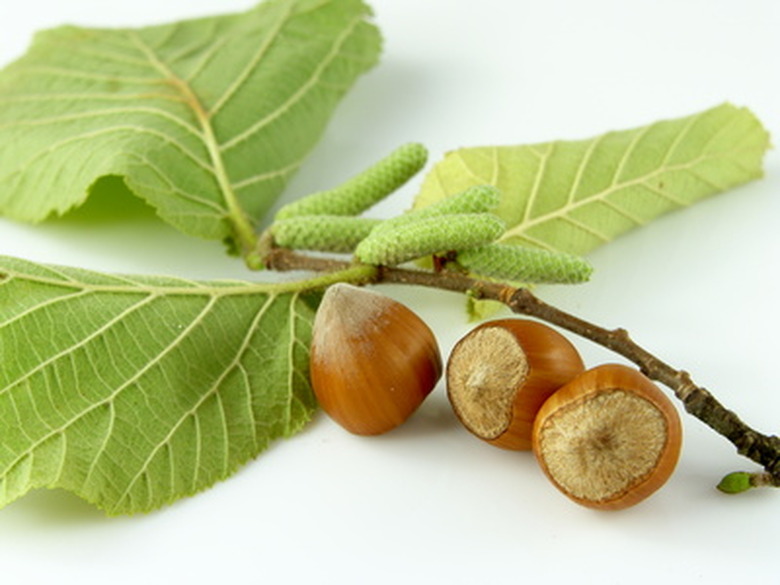Nut Trees That Can Grow In The Northwest States
Nut trees generally require a chill period (a set number of hours per growing season when temperatures are below 45 degrees F), making the Northwest a good growing zone. Most nut trees ripen in the late summer and drop their nuts by early fall-but nuts may be harvested before they drop, by picking or shaking the tree.
The Northwest, which includes Idaho, Montana, Oregon, Washington and Wyoming, is located is U.S. Department of Agriculture Plant Hardiness Zones 3 to 6, though coastal Oregon and Washington are in Zone 8, which has a milder winters.
Filbert
Filbert trees (Corylus), also known as hazelnuts, are grown commercially in the U.S. in the Pacific Northwest, including in Oregon and Washington, where the winter chill and mild summers allow the fruit to properly set and ripen. But these trees may also be grown in colder parts of the Northwest, including Montana, Idaho and Wyoming. Filbert trees, which grow to 10 to 18 feet, have oval-shaped, green leaves and produce tasty, oval-shaped nuts in smooth brown shells.
These trees require cross-pollination and should be planted in pairs. Filbert trees prefer full sun and regular water and should be planted in deep, well-draining, slightly acidic soil.
- Nut trees generally require a chill period (a set number of hours per growing season when temperatures are below 45 degrees F), making the Northwest a good growing zone.
- Filbert trees (Corylus), also known as hazelnuts, are grown commercially in the U.S. in the Pacific Northwest, including in Oregon and Washington, where the winter chill and mild summers allow the fruit to properly set and ripen.
Hickory
The Shellbark Hickory tree (Carya laciniosa), also known as the King Nut Hickory, produces the largest of all hickory nuts and should be planted in a wet area. It is hardy in Zones 5 to 9, making it a good choice for Idaho or inland Oregon or Washington. Hickory trees are relatives of the pecan, which is not a good selection for the Northwest, as it requires a warmer climate to flourish.
These trees may grow to 100 feet and though they prefer regular water, hickories can tolerate summer drought. Hickories should be planted in full to partial sun and are adaptable to many soils.
Walnut
Black Walnut trees (Juglans nigra) are not native to the Northwest, but can grow well throughout the Northwest, with the exception of coastal regions. Grown wild, these trees can reach 150 feet, but usually top out at about 75 when grown in a garden landscape or tree farm. These trees produce a rich, sweet nut in a hard shell.
- The Shellbark Hickory tree (Carya laciniosa), also known as the King Nut Hickory, produces the largest of all hickory nuts and should be planted in a wet area.
The wood from Black Walnut trees is a hardwood that is used in making furniture or flooring. Black Walnut trees have shallow roots and may be messy, as leaves drop over an extended period of time and the husks of the nuts may stain. These trees should be planted in full sun and require regular water.
References
- Nature Hills: Edible Nut Trees
- "Sunset National Garden Book": by the editors of Sunset Publishing and Sunset Magazine; 1997
